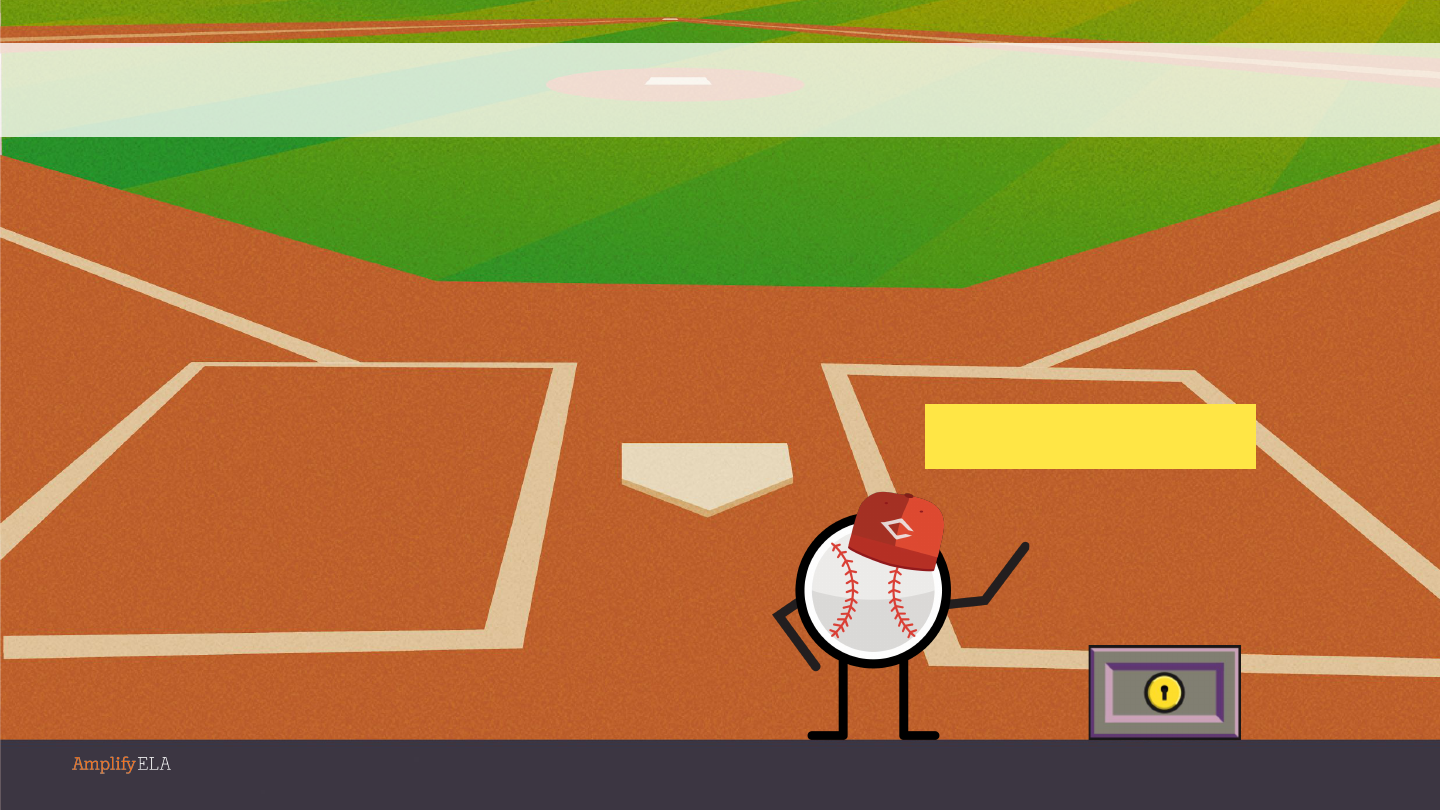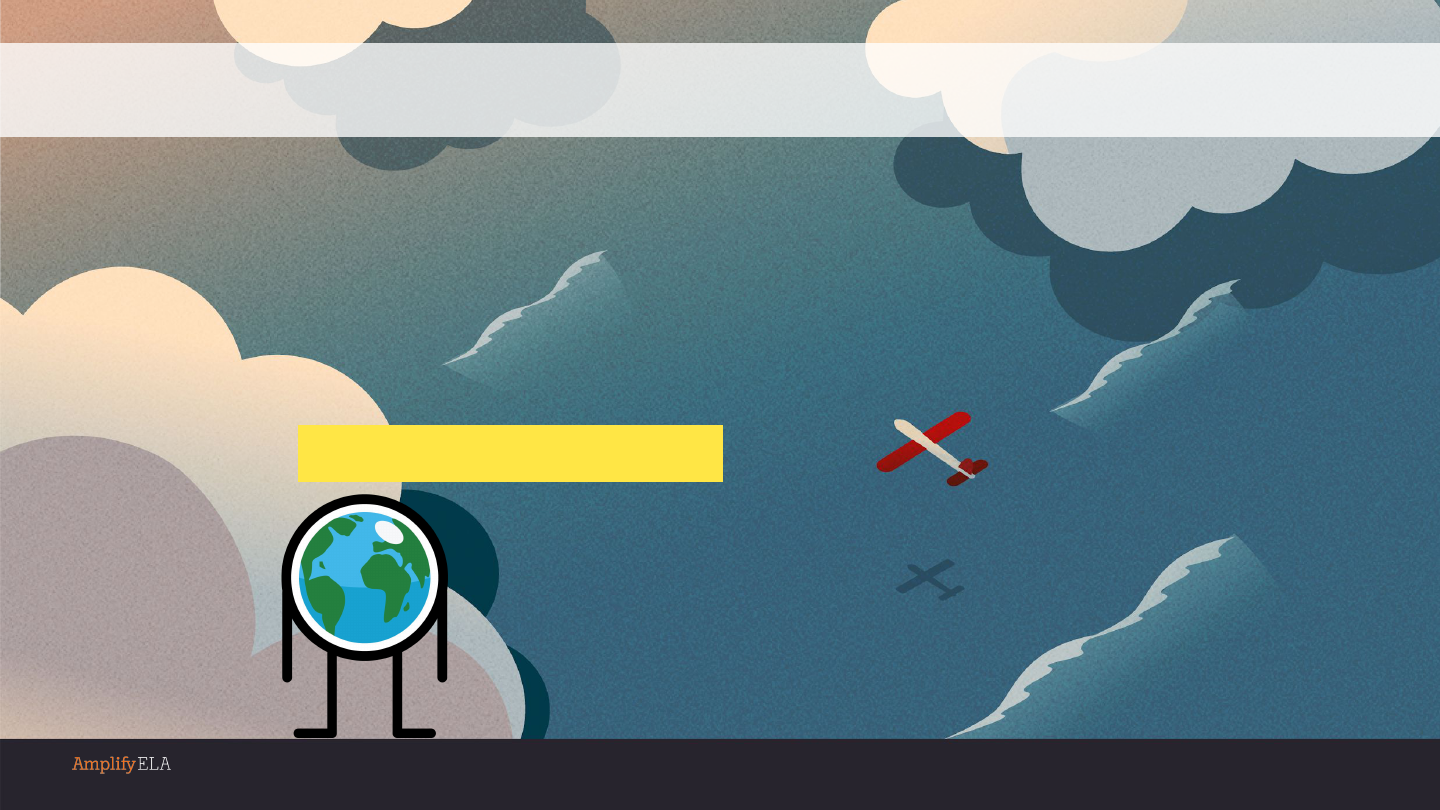
You must be new here. Ready for
some words?
15–20 mins
Vocabulary
Figurative Language
Unit 8D

Part 1: Word list
Here comes a list of words.
Let’s play ball!
Unit 8D | 2

Unit 8D | Part 1: Word List | 3
Word list
pilgrims
entreat
descending
timeless
quarrels
envious
woe
amorous
sheath

Are you ready to explore some more?
Unit 8D | 4
Part 2A: Introducing Figurative Language

Unit 8D | Part 2A: Introducing Figurative Language | 5
Literal language:
means exactly what it says
Figurative language:
expresses something other than the usual or literal meaning
of the words

Unit 8D | Part 2A: Introducing Figurative Language | 6
Metaphors, similes, and personification are three types of
figurative language.
Metaphor: a comparison between two things that expresses a common
quality
Simile: a comparison between two things that uses “like” or “as” to
express a common quality
Personification: giving human characteristics (like feelings or thoughts)
to something that isn’t human

Unit 8D | Part 2A: Introducing Figurative Language | 7
Metaphor: “I had become a shining star, a burning nova / Exploded with
love / Flying through an endlessly / Expanding universe.”
(Modern Day Romeo and Juliet Archive, Excerpt: Street Love, 58–61)
Simile: “But we had begun stopping at corners and looking around, and
the wind had become like a good Swiss knife: it cut through everything with
sharp precision.”
(Modern Day Romeo and Juliet Archive, Excerpt: Two Suns in the Sky, 20)
Personification: “Mama’s fingers rejoiced in the untangling of knots.”
(Modern Day Romeo and Juliet Archive, Excerpt: Two Suns in the Sky, 3)
Examples from the text:

Unit 8D | Part 2A: Introducing Figurative Language | 8
Word: pilgrims
Definition: traveling worshippers
Literal language: The pilgrims traveled far to visit the shrine that housed
ancient relics.
Figurative language: “My lips, two blushing pilgrims, ready stand / To
smooth that rough touch with a tender kiss.”
(Romeo and Juliet, Act 1, Scene 5, 92–93)
● Type of figurative language: This is a metaphor. Romeo says that his
lips are pilgrims.

Unit 8D | Part 2A: Introducing Figurative Language | 9
Before kissing my hand, he said
his lips are pilgrims. He must
mean that my hand is sacred!
“My lips, two blushing pilgrims,
ready stand / To smooth that
rough touch with a tender kiss.”
Use figurative language to convey emotions, create images, or
make a strong point.
Figurative language wakes up your audience’s imagination and invites
them to think about your words in order to infer your literal meaning.
Why use figurative language?

What? Is there something on my face?
Unit 8D | 10
Part 2B: Using Figurative Language

Unit 8D | Part 2B: Using Figurative Language | 11
Does the example below use literal language or figurative language?
● If figurative, is it a metaphor, simile, or personification?
descending
Definition: coming down
“...it was clear that with a wall of secrecy descending around the whole
incident, the police were going to have their work cut out.”
(Modern Day Romeo and Juliet Archive, “India’s Romeo and Juliet Tragedy,” 34)

Unit 8D | Part 2B: Using Figurative Language | 12
Does the example below use literal language or figurative language?
● If figurative, is it a metaphor, simile, or personification?
entreat
Definition: beg
“Two of the fairest stars in all the heaven, / Having some business, do
entreat her eyes / To twinkle in their spheres till they return.”
(Romeo and Juliet, Act 2, Scene 2, 15–17)

Unit 8D | Part 2B: Using Figurative Language | 13
Does the example below use literal language or figurative language?
● If figurative, is it a metaphor, simile, or personification?
timeless
Definition: permanent
“What’s here? A cup clos’d in my true love’s hand? / Poison, I see, hath
been his timeless end.”
(Romeo and Juliet, Act 5, Scene 3, 169–170)

Unit 8D | Part 2B: Using Figurative Language | 14
Does the example below use literal language or figurative language?
● If figurative, is it a metaphor, simile, or personification?
quarrels
Definition: arguments
“Thy head is as full of quarrels as an egg is full of meat.”
(Romeo and Juliet, Act 3, Scene 1, 9)

Part 3: Let’s practice
Practice makes perfect! Are you
ready? Moo.
Unit 8D | 15

Unit 8D | Part 3: Let’s practice | 16
Does the example below use literal language or figurative language?
● If figurative, is it a metaphor, simile, or personification? More than
one?
envious
Definition: jealous
“It is the east, and Juliet is the sun. / Arise, fair sun, and kill the envious
moon, / Who is already sick and pale with grief.”
(Romeo and Juliet, Act 2, Scene 2, 3–5)

Unit 8D | Part 3: Let’s practice | 17
Does the example below use literal language or figurative language?
● If figurative, is it a metaphor, simile, or personification? More than
one?
woe
Definition: sadness
“Go hence to have more talk of these sad things; / Some shall be
pardon’d, and some punished: / For never was a story of more woe /
Than this of Juliet and her Romeo.”
(Romeo and Juliet, Act 5, Scene 3, 317–320)

Unit 8D | Part 3: Let’s practice | 18
Does the example below use literal language or figurative language?
● If figurative, is it a metaphor, simile, or personification? More than
one?
amorous
Definition: in love
“Shall I believe / That unsubstantial Death is amorous, / And that the
lean abhorred monster keeps / Thee here in dark to be his paramour?”
(Romeo and Juliet, Act 5, Scene 3, 103–106)

Unit 8D | Part 3: Let’s practice | 19
Does the example below use literal language or figurative language?
● If figurative, is it a metaphor, simile, or personification? More than
one?
sheath
Definition: a covering for a sword or knife
“O happy dagger, [Taking Romeo’s dagger.] / This is thy sheath; / [Stabs
herself.] there rust, and let me die.”
(Romeo and Juliet, Act 5, Scene 3, 177–178)

Part 4: Try it on your own
Think you're a pro now?
Show me what you've got!
Unit 8D | 20

Unit 8D | Part 4: Try it on your own | 21
Shakespeare famously invented two metaphors for jealousy. He called it
“green-eyed jealousy” in The Merchant of Venice and “the green-eyed monster”
in Othello.
Come up with your own figurative language (metaphor, simile, or
personification) that communicates what it feels like to be envious (jealous).
Write a paragraph that incorporates at least one type of figurative language.
Example:
When the green-eyed monster took over my body, all other thoughts and
emotions vanished into thin air. Rage coursed through my veins and a haze
covered my eyes. Where before I had viewed friends and acquaintances, now I
only saw competitors who needed to be flung out of my way.
New word task:

All done. Nothing to see here.
